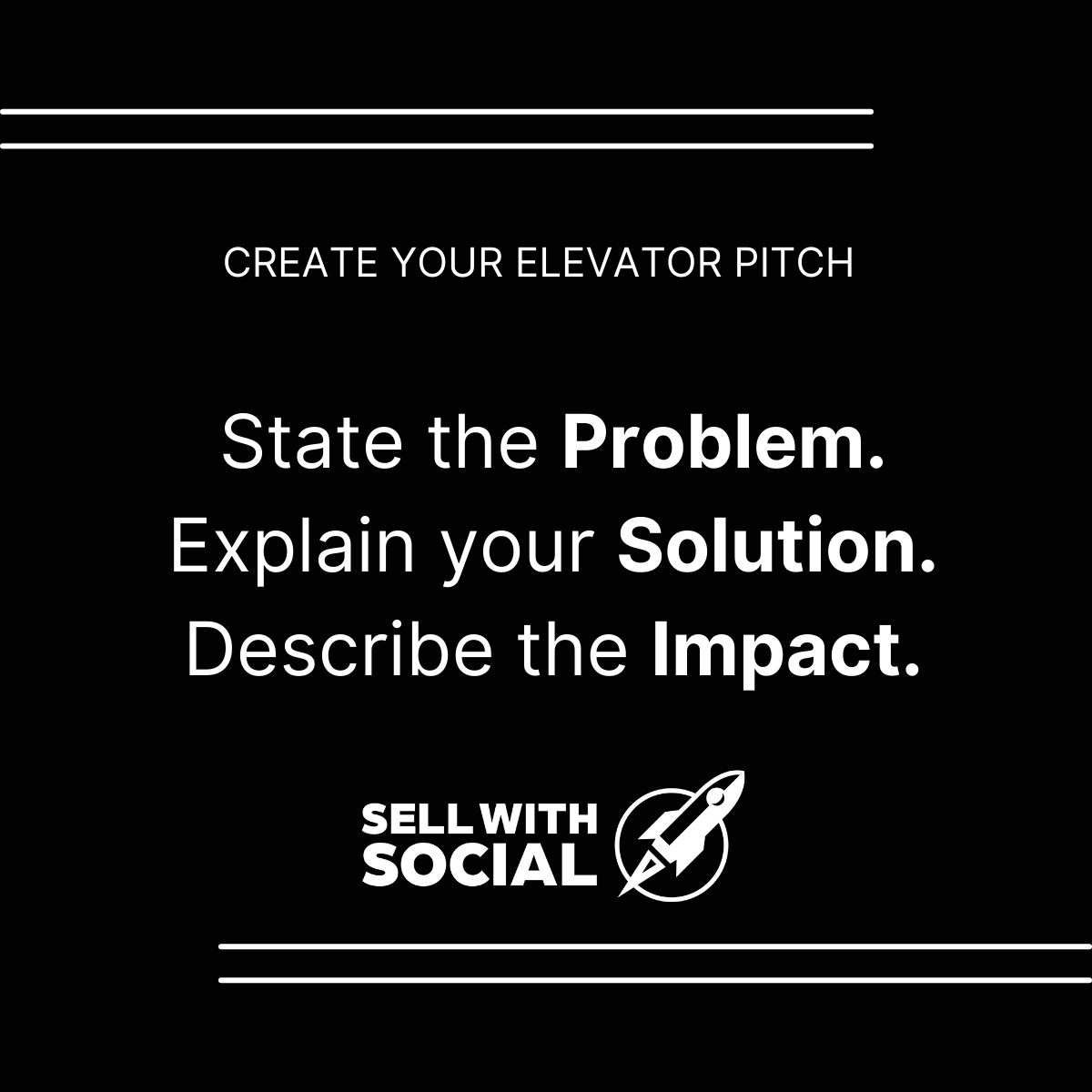Elevator Pitch 101: How to Hook Your Audience and Make a Lasting Impression
The two or three sentences that briefly tell people what you do, who you do it for, and why it matters.
As the doors open to the bustling networking event, you walk in ready to make some new connections. You have attended countless events like this in the past, and this one appears to be no different. Lots of vendors, some familiar faces, and many new ones.
Taking a deep breath, you make your way to the registration table, flashing a bright smile at the organizers. After picking up your nametag and a drink, you scan the room, searching for potential leads.
Spotting a group of people gathered around a nearby booth you confidently walk over, introducing yourself to the group.
After a few introductions, the all-so-common question gets asked - “So, what do you do?”
What you say next will determine whether or not the person you are talking to will continue to be interested in what you do, or if the conversation moves on to another topic.
What you say next is your elevator pitch. The two or three sentences that briefly tell people what you do, who you do it for, and why it matters.
But here’s the thing - most people don’t have a pitch. They simply state what they do.
“I sell personal lines insurance.”
“I’m a tax accountant.”
“I’m in commercial lending.”
While stating your job role might allude to what you do, it doesn’t speak to the why, how, or who of your approach.
If I respond, “I’m a sales coach.” What does that mean to you?
Versus if I say, “Many sales reps find the old-school sales tactics ineffective in today’s digital world. I help teach sales teams how to sell with social, so that they can expand their reach online, build authority, and grow their revenue.”
Which response do you think will be more effective?
The first response will probably fall flat. We all know sales coaches, and who wants to sit through more sales training? We don’t think we’ll benefit from learning more, so we don’t keep listening.
But the second pitch is engaging. If you are a sales rep who is tired of cold calling and know that you should be more active on digital channels, the second response will speak directly to you. Or even if you are not the target customer, you may know somebody who is trying to become more effective with social selling.
This difference between delivering a great elevator pitch versus simply stating your role, can make or break your effectiveness as a salesperson.
What is an Elevator Pitch?
An elevator pitch is a brief and compelling summary of a business idea, product, or service that can be delivered in the time it takes to ride an elevator, typically between 30 seconds to two minutes.
The goal of an elevator pitch is to quickly and effectively communicate the essence of the idea or product in a concise and memorable way that captures the listener's attention and leaves a lasting impression.
Why it Matters
The foundation of truly being effective at sales is connecting your customers with solutions to their problems. You’re a change agent that is able to guide your prospects to their desired happy ending.
Your elevator pitch is your blueprint for how you sell. It’s a simplified way of explaining what you do, how you do it, and why it matters.
Here are five reasons why you should have a well-defined elevator pitch:
- First Impression - You only have one chance to make a first impression. A well-crafted elevator pitch can help you make a great first impression and capture their attention from the get-go.
- Cognitive Ease - Our brains are far more likely to engage with something "easy" to understand. Clearly articulating your elevator pitch will make it simple to comprehend what you sell.
- Telling a Story - Your elevator pitch can be told in a story format, with a clear problem, solution, and outcome, that will enable your prospects to emotionally connect with what you do.
- Communicate Value - Beyond just stating what you do (what most people say), your elevator pitch goes a step further and communicates the value of what you have to offer.
- Leads to Action - Your elevator pitch also opens the doors for your audience. By defining the problem you solve and how you solve it, you can now invite them to take action.
Creating Your Elevator Pitch
Now let’s talk about how to create your elevator pitch.
Your elevator pitch should be simple, relevant, and memorable. If you don’t provide enough information, it won’t be relevant. If you give too much information, you’ll confuse your audience.
This is the format I use:
- First – The customer’s problem. This is where you state the problem that your customer is facing. You want this to be specific, addressing both who your customer is and what the pain point is.
- Second – Your solution. Next, you explain your solution in an easy-to-understand way. This is the unique way you help those customers address their problems.
- Third- The impact. Finally, you highlight the desired outcome that your customer wants. What is their happy ending? This helps them visualize the impact your solution will have.

Simplify your elevator pitch by writing out the answer to each part of the framework, with answers specific to your solution, your customers, and the outcomes you help them active.
What problem (X) do you solve for your customer (Y)?
What is your solution (Z)?
What is the impact (A) your solution will have?
Now, use your answers to craft a 1-3 sentence elevator pitch. Use this template: X is a problem that Y people face. We provide Z solutions, so that Y can achieve A.
EZ-PZ, right?
If you are still struggling, here are a few examples to check out:
Pest Control Company
- Problem: Homeowners struggle with do-it-yourself pest control that is often ineffective and unpleasant.
- Solution: We provide a proactive pest control service program.
- Impact: So that you can stop worrying about pest damage and avoid doing the dirty work yourself.
Accounting Firm
- Problem: Most households are overpaying in their yearly taxes.
- Solution: We’ve developed a 3-step tax planning framework.
- Impact: So that you can keep more of your hard-earned money each year.
I’d also note that crafting an elevator pitch is a great team activity. It enables you to brainstorm your true value proposition and gets everyone at your company thinking about how they position themselves to prospective customers.
Using Your Elevator Pitch
Once your pitch is developed, it’s time to implement it. This is your quick and effective value proposition that you can utilize across your sales and marketing content (and in real life).
My first suggestion for “using” your pitch is to practice it wherever possible. As you meet new people and talk to friends/family, start using your pitch to describe what you do. It will seem a little awkward at first, but over time you should be able to state it more clearly.
Then consider all the places on your sales and marketing content where you can better state your value proposition. Here are some examples:
- About Sections on LinkedIn/Social Media
- Website Homepage
- Print Collateral
- Cold Email Outreach
- In-Person Networking Introductions
Over time, you’ll find you may need to adapt your pitch. That’s okay! Your customer personas evolve, your offering evolves, or you just find a better way to position what you do.

It’s time to put your learning into action. For this week’s action items, I want you to begin to leverage the power of an intentional elevator pitch.
There are two items you should do:
- Create Your Pitch - Craft your winning elevator pitch using the framework above. Develop it by yourself or as part of a team activity.
- Update Your Content - Then update your social profiles with your new elevator pitch. Use it as a way to engage your audience, explain your value proposition, and lead them to clear calls to action.
PS - I’ll host a Linkedin Live on the Elevator Pitch on May 18th at 11:30 am CST. Register here!
